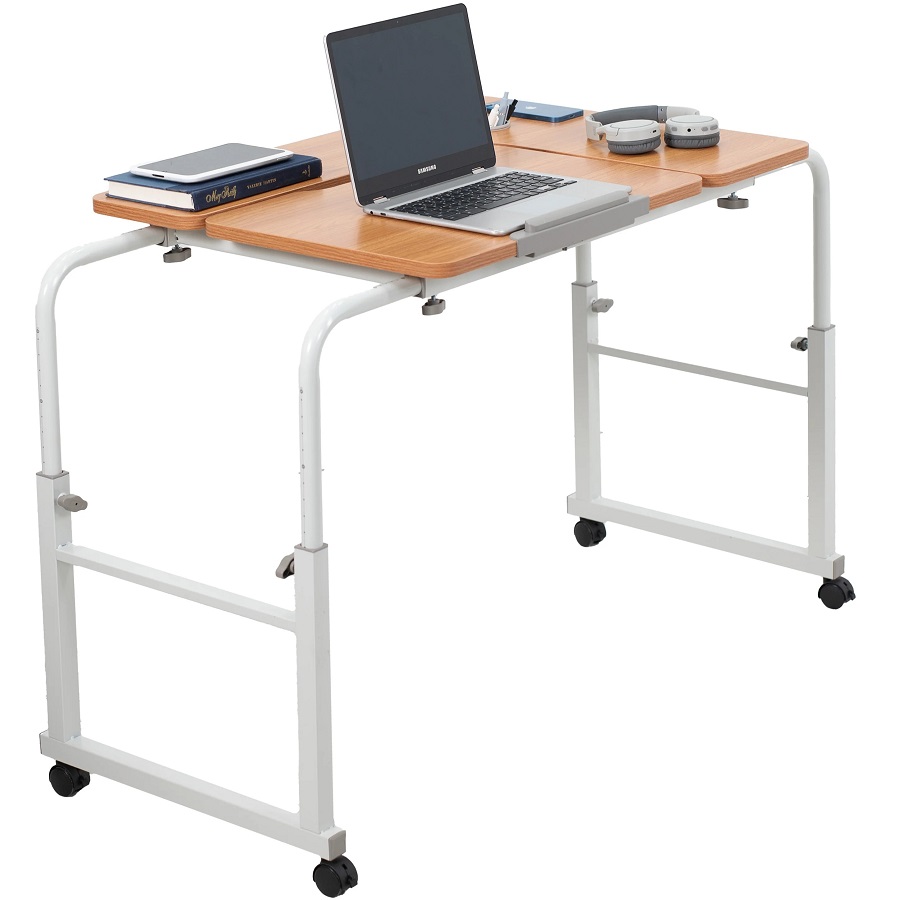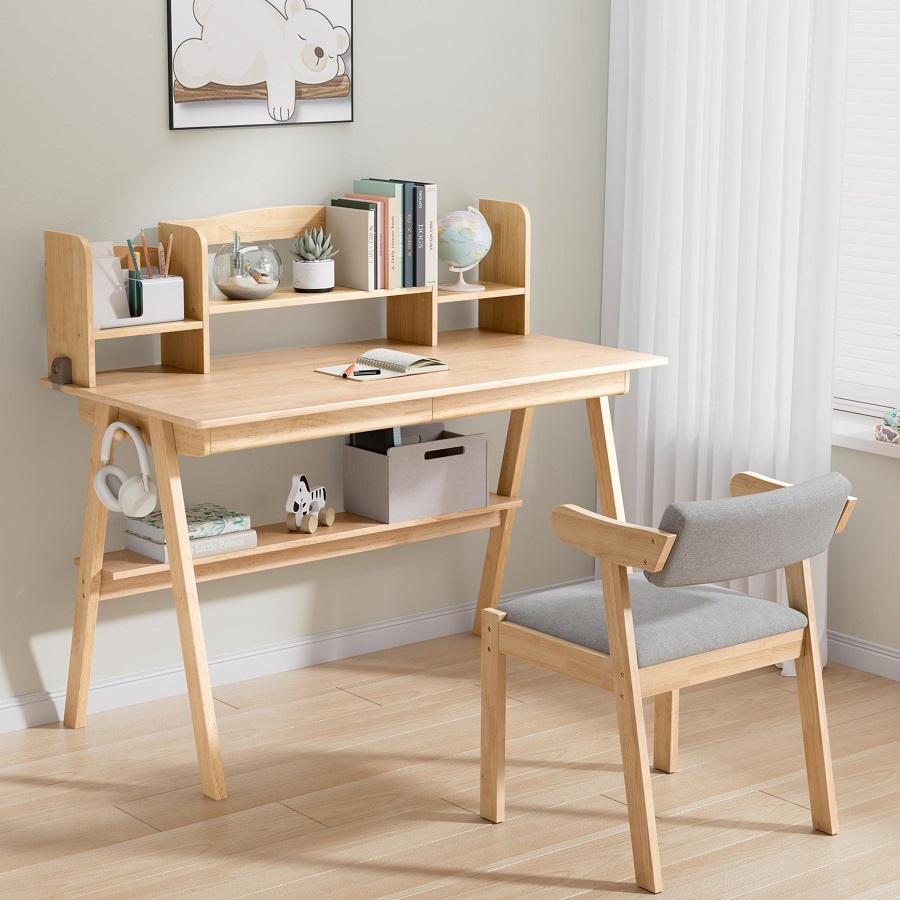Trendy Design Features for Kids Writing Desks in 2025
As we step into 2025, the design of kids writing desk is evolving to meet both aesthetic preferences and functional needs. Trendy features this year emphasize creativity, adaptability, and tech integration, capturing the imagination of young minds. These are some of the standout features:
- Adjustable components: Desks now come with adjustable legs and tabletops. This allows the desk to grow with your child, providing an optimal fit through different growth stages.
- Incorporated technology docks: With the rise of digital learning, desks are designed with built-in docks for tablets and devices. This ensures that technology is a seamless part of the learning experience.
- Creative shapes and themes: Gone are the days of standard rectangular desks. Contemporary kids writing desks flaunt imaginative shapes, from rocket ships to forest creatures, fostering a fun environment.
- Multipurpose surfaces: Chalkboard finishes, whiteboard panels, and magnetic boards are becoming popular. These features encourage children to jot down ideas and display their artwork right on their desk.
- Eco-friendly materials: There is a growing demand for desks made of sustainable materials. Desks made from bamboo or recycled plastics are not only stylish but also kind to the planet.
- Bold and bright colors: A splash of color can spark creativity. Desks in vivid hues or with funky patterns make for an inviting writing space.
- Smart storage solutions: Innovative storage compartments help kids organize their supplies while keeping the desk clutter-free. Hidden shelves and discreet drawers are in vogue.
Parents seeking the perfect kids writing desk in 2025 should look for these features to create a stimulating and productive environment for their children’s writing and learning activities.

The Importance of Ergonomics in Children’s Desks
Ergonomics is vital in designing kids writing desks. A poorly designed desk can lead to discomfort and even health issues like back pain or poor posture. Here’s why ergonomics should be a top priority:
- Promotes Good Posture: Ergonomic desks encourage children to sit properly. This is crucial as their bodies grow.
- Adjusts to Fit: Desks with adjustable features fit a child’s size, supporting their comfort while writing or reading.
- Prevents Strain: The right desk height and chair pairing prevent strain on the neck and eyes. It also allows feet to rest flat on the ground.
- Boosts Focus: Comfortable seating and desk arrangements can boost a child’s focus and productivity.
Parents should consider ergonomics essential when choosing a kids writing desk. It ensures long-term comfort and supports healthy development.
Sizing Guide: Choosing the Right Desk for Your Child’s Age and Height
Selecting the ideal kids writing desk involves more than just design. Size is a critical factor. A desk that’s too small or too large can impact your child’s comfort and posture. Here’s how to choose the right desk for your child’s age and height.
- Measure Your Child’s Height: Start by measuring your child’s height. This will determine the ideal desk height. The goal is to allow their feet to rest flat on the floor while seated.
- Consider Leg Room: Ensure that there is ample leg room under the desk. Your child should be able to move their legs freely without restriction.
- Desk Height Guidelines: Typically, the standard desk height for children ranges from 18 to 26 inches. Match this to your child’s height for a comfortable fit.
- Age-Appropriate Sizes: As a general rule, toddlers to early school-age children will do well with desks around 18 to 20 inches high. Older children, around 8-12 years old, may need desks from 20 to 24 inches high. Teenagers may require adult-sized desks, usually 26 inches or higher.
- Adjustability is Key: Opt for a desk with adjustable height. This feature will accommodate your child’s growth and prolong the desk’s usability.
Parents should prioritize finding a kids writing desk that suits their child’s physical development. A desk of the right size will contribute to a healthy, ergonomic study space that grows along with the child. Keep these tips in mind to make an informed decision that combines both form and function.
Material Matters: What to Look for in Quality and Safety
When selecting a kids writing desk, material quality and safety are paramount. It’s crucial to ensure that the desk is resilient enough to withstand daily use and is free from harmful substances that could jeopardize your child’s health. Here are key factors to consider:
- Sturdy Construction: A well-built desk should not wobble or feel flimsy when used. Check the desk’s construction to ensure it is stable and durable.
- Safe Materials: Choose desks crafted from non-toxic materials. Look for labels indicating the absence of harmful chemicals like lead or BPA.
- Rounded Edges: To minimize the risk of injury, opt for desks with rounded corners. This design is safer in case of bumps or collisions.
- Certification Labels: Desks with safety certifications guarantee that they meet certain standards. Look for certification labels from recognized organizations.
- Easy to Clean: Kids can be messy! A desk with a surface that’s easy to wipe and disinfect promotes a hygienic study space.
- Eco-Friendly Options: If environmental impact is a concern, select desks made from sustainable or recycled materials. These choices benefit your child’s health and the planet.
Parents should prioritize these material and safety aspects to create a secure and enduring environment for their child’s educational pursuits.

Interactive Elements that Enhance Learning and Creativity
Interactive elements in kids writing desks can significantly boost both learning and creativity. Today’s desks come with many features that engage young minds. Here’s what to look for:
- Built-in Interactive Tools: Desks may include in-built rulers, or conversion charts that make learning interactive and handy.
- Touch-sensitive Surfaces: Some desks offer touch-sensitive surfaces, enabling children to interact with digital content directly with their fingers.
- Puzzle and Game Features: Sections of the desk can transform into puzzles or board games, providing a playful way to learn.
- Interactive Lighting: Desks with adjustable lighting can help children focus, especially on tasks that require precision and attention.
- Desk Extensions for Group Work: Having extensions or additional modules can encourage collaborative work among peers, fostering both social and cognitive skills.
- Audio-visual Integrations: Desks equipped with speakers or projection capabilities can turn a study session into a multimedia experience.
These engaging features make the kids writing desk not just a place for writing, but a dynamic space for learning and expression. The interactive elements can be instrumental in developing a child’s interest in studying and exploring new ideas. Parents should look for desks that offer more than just a flat surface; those that bring a sense of fun and interactivity may have a remarkable impact on a child’s educational journey.
Storage Solutions for a Tidy Study Space
A tidy study space is essential for kids to learn and create effectively. With the right storage solutions on a kids writing desk, it’s easier to keep supplies in order and reduce clutter. Here are top storage features to consider:
- Built-in Compartments: Look for desks with compartments dedicated to specific supplies like pencils, scissors, and erasers. These keep essentials within reach but out of the way.
- Under-Desk Shelves: Shelves installed under the desktop provide a neat place for books and notebooks. This makes use of otherwise wasted space.
- Pull-Out Drawers: Drawers are a classic storage solution. They hide away clutter and organize items that are not constantly in use.
- Desk with a Hutch: A hutch adds vertical storage and can house everything from stationery to trophies.
- Cubbies and Bins: Open cubbies and removable bins make it easy for kids to grab what they need and put it back.
- Cable Management Systems: With the integration of technology, managing cords and cables is a must. Look for desks with built-in solutions to keep cables untangled and out of sight.
- Hidden Compartments: Desks with secret compartments spark kids’ imaginations while offering extra storage.
By incorporating these smart storage solutions, parents can help their children maintain a clean and organized workspace. A kids writing desk with effective storage options supports a structured learning environment that is conducive to productivity and creativity.
Top Must-Have Accessories for the Ultimate Writing Desk
To create the perfect setup for a child’s study area, complementing the kids writing desk with smart accessories is key. These must-have additions can boost functionality and inspire productivity. Let’s explore some accessories that are both practical and delightful for young learners:
- Comfortable Desk Chair: The right chair pairs with the desk for ergonomic support. It should adjust to your child’s height.
- Desk Lamp: A lamp with adjustable brightness safeguards eyes during reading and writing.
- Desk Organizer: Organizers keep pens, pencils, and scissors in order. A tidy desk encourages efficient study habits.
- Book Stand: A stand holds books and tablets at eye level. This helps prevent neck strain.
- Time Management Clock: Clocks or timers promote focus with time management cues.
- Noise-Canceling Headphones: For concentration, headphones block out distractions.
- Corkboard or Whiteboard: A place to pin or write important reminders enhances memory.
- Footrest: An ergonomic footrest may help smaller children whose feet don’t reach the floor.
When choosing accessories, ensure they fit the desk’s size and match your child’s needs. Aim for a balance between fun and function to keep them excited about their personal study space. Remember to integrate the keywords ‘kids writing desk’ evenly in your content.

The Role of Color Psychology in Selecting Kids Writing Desks
Color psychology plays a critical role when choosing a kids writing desk. Colors can influence mood, stimulate creativity, and even affect concentration levels. As parents browse for the ideal desk, understanding color psychology can help in selecting a color that aligns with their child’s personality and learning style. Here’s how colors can impact a young learner:
- Blue: Known to promote productivity, blue can be perfect for a desk in shades that soothe and focus.
- Green: This color stands for balance and tranquility. A green desk can help alleviate anxiety during study time.
- Yellow: Hues of yellow spark enthusiasm and energy. They’re great for creative young minds that enjoy drawing and writing.
- Red: While vibrant, red might be too stimulating. But as an accent, it can energize a study space.
- Pink: Typically calming and gentle, pink can make a study area feel warm and comforting.
- Orange: Orange desks blend enthusiasm with an inviting warmth. This color can enhance social interaction and discussion among peers.
- White: A clean, white desk can help in minimizing distractions, supporting your child’s focus.
- Wood tones: Natural wood hues contribute to a grounded, calming environment, perfect for concentration.
Remember to include your child in the color selection process for their kids writing desk. Their personal preference is important and can make them feel more connected to their study space. Aim for a happy medium between preferred colors and those that will benefit their learning and comfort.
